Luftwaffe Robert Klaas-made 2nd pattern Dagger
SKU: 22.GOR.04.01.02.10.001
Estimated market value:
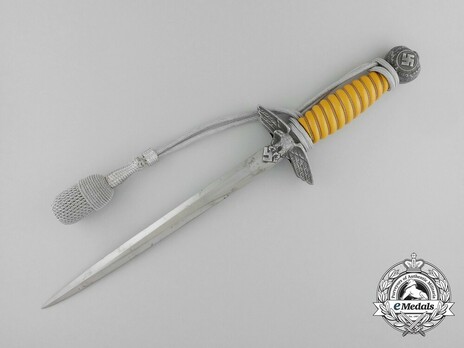
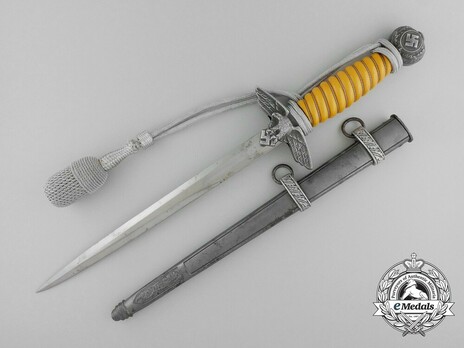
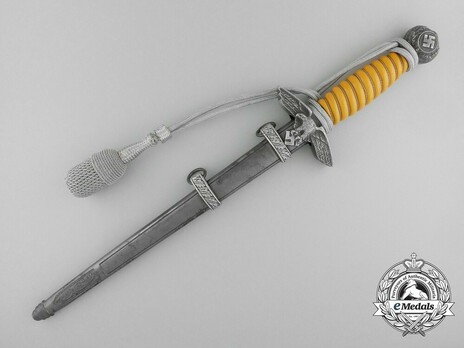
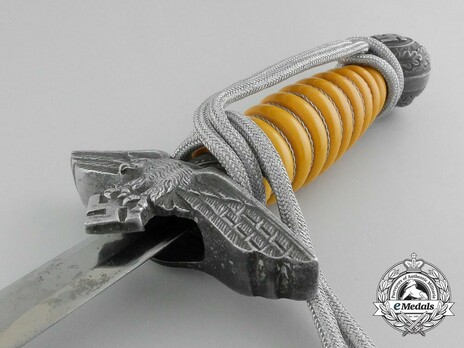
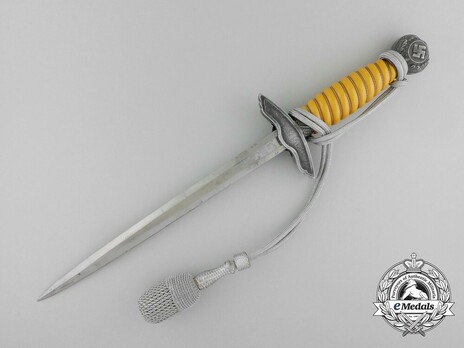
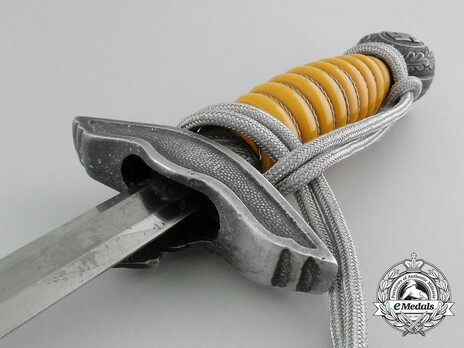
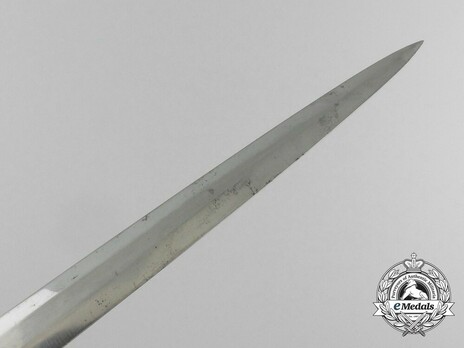
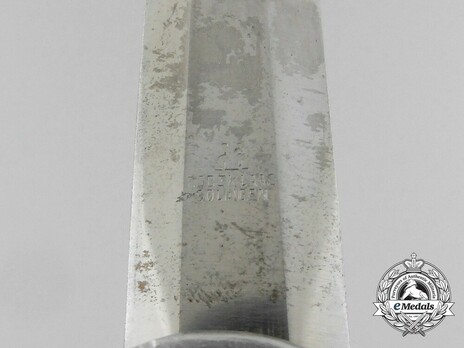
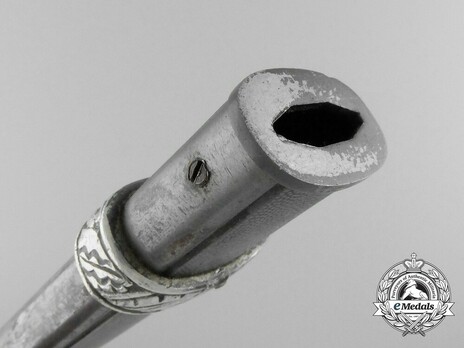
Estimated market value:
Attributes
History
The German Wehrmacht was composed of three main branches, the Heer (Army), the Kriegsmarine (Navy), and the Luftwaffe (Air Force). The Heer and the Kriegsmarine had a long history of edged weapons dating back to the late 19th century. Conversely, there were no edged weapons used by the Deutsche Luftstreitkräfte, the First World War German Air Force. The daggers worn by Luftwaffe personnel were based upon the designs pioneered by the German Air Sports Association (DLV or Deutscher Luftsportverband) and the National Socialist Flyers Corps (NSFK or Nationalsozialistisches Fliegerkorps).
In 1933, the DLV was created as a civilian sports organization, but it secretly trained its members for future roles in the Luftwaffe. The DLV became obsolete after Hitler’s official introduction of the Luftwaffe in 1935, and it was disbanded and replaced by the National Socialist Flyers Corps (NSFK or Nationalsozialistisches Fliegerkorps) in 1937.
The DLV edged weapons were only issued from 1934 to 1936, due to the introduction of edged weapons for the Luftwaffe in 1935. From 1935-1937, a transitional version of the DLV Officer’s dagger was manufactured and issued alongside the Luftwaffe dagger. It has a mix of DLV and Luftwaffe dagger attributes.
The daggers awarded to Luftwaffe personnel were produced in two models. The 1st model daggers were issued from 1935-1937, and the 2nd model daggers were issued from October 1, 1937, until December 1944. The 1st model daggers were only permitted for wear by Luftwaffe Officers who had attained flying status, and they are also known as Flyer’s Dagger (Fliegerdolch). The 2nd model daggers are known as Flying Officer’s Dagger (Flieger-Offizierdolch), and they were meant to be worn by all Officers, and other personnel with the equivalent rank of Officer, in the Luftwaffe. Eventually, Non-Commissioned Officers were also permitted to wear the 2nd model dagger if they held a rank with a portepee.
The 1st model daggers copied the DLV dagger design and attributes, while the 2nd model daggers were given a completely new look. As for composition, both the 1st and 2nd model dagger blades are composed of nickel-plated steel. The metal fittings on the 1st model dagger were made of silver-plated nickel on early versions and aluminum on later versions, and the 2nd model dagger fittings tend to be made from an aluminum base that may be silvered or plated with nickel. The fitting of the 1st model daggers may also be covered in a protective layer of lacquer.
The 1st model pommel is a plain circular medallion with a gold-coloured sunwheel swastika on the obverse and reverse surfaces. These pommels were either manufactured from silver-plated nickel or silver/nickel-plated brass. The swastikas could be gilded to appear gold, as in the case of the early silver-plated nickel pommels, or buffed and thinly gilded, in the case of the later silver/nickel-plated brass pommels. Conversely, the 2nd model pommel has a bulbous oval shape and is made from aluminum. The pommel’s obverse and reverse feature a raised swastika within a circular medallion that is encircled by an oak leaf wreath with acorns. The swastikas may be gilded to appear gold-coloured.
The 1st model grip is identical to the DLV Officer’s dagger, and it is composed of a wooden base with a downward spiral, blue Moroccan leather, and decorative wire. The 2nd model grip is generally made from solid plastic, either celluloid or trolon, in a downward spiral design with metal wire. The colours of these grips vary, including white, yellow, and orange due to several factors, including the effects of light and time, and the choice of colour by the dagger owner. The 2nd model grips are also rarely composed of simulated ivory, or even less often of actual ivory.
The 1st model crossguard is identical in design to the DLV dagger crossguard, with a centre block section and two extending wings/arms. The centre section features a sunwheel swastika on the obverse and reverse. The swastikas are composed in the same manner as the sunwheel swastikas on the pommel. The extending wings are composed of three long, segmented ovals that are curved downwards. The 2nd model crossguard is completely different, in that it is made of aluminum that matches the pommel, and is shaped like an eagle with extended wings and a swastika in its claws. The obverse of the crossguard features the detailed eagle, while the reverse only has the outline of the eagle. The top and bottom panels in the eagle’s wings are decorated with oak leaves, these leaves may be raised or incised.
The 1st model scabbard shell is composed of two sections of steel or aluminum with a welded seam. The shell is covered in blue Moroccan leather and has three metal fittings with scalloped edges. The upper fitting is part of the built-in throat assembly, and it also features an eyelet attachment for the dagger hanger; only the bottom of this fitting is scalloped. The middle fitting features scalloping along the top and bottom edges. The lower fitting (chafe) has scalloping along the top edge, while the bottom features two circular forms resembling a rattlesnake tail. The 2nd model scabbard is made from steel and coated in a grey finish. This scabbard shell features a pebbled surface with additional oak leaf and acorn designs on the bottom/tip area of the scabbard. There are only two carrying bands on these scabbards, one directly below the crossguard, and the other about halfway down the scabbard. Each band is decorated with oak leaf designs and features a permanently attached carrying ring.
The 1st model dagger hanger is composed of two chain segments, with 9 links on the top chain and 14 links on the bottom chain. The upper and lower chain segments are linked by a clip. The 2nd model dagger hangers feature two straps made from blue or purple embroidered fabric with two stripes of silver bullion wire, leather, and metal buckles, clips, and a hanger bar. The buckles were decorated with oak leaf designs, and the back of the fabric features a velvet or felt covering.
The 1st model dagger differs from the DLV Officer’s dagger in the design of its blade and tang. The blade is much shorter than the DLV dagger blade, measuring only 304mm in length, and it is doubled-edged with three flat segments. It is composed of nickel-plated steel that generally features a mirror finish, but may rarely have a polished surface. The tang has been filled flat to be able to fit tightly into the crossguard and often has a rainbow discolouration as a result of the high heat used in its manufacture. The 2nd model dagger blade is very similar to the 1st model blade, with a double-edged design with three flat segments. For additional costs, the blade of the 2nd model daggers could etch with additional designs.
The manufacturer marks are generally acid etched onto the reverse of the blade. Additionally, the later aluminum snap clips are generally marked “GES.GESCH.” and OLC.
It is not unusual to find a Luftwaffe factory inspector Waffen Ampt “LWaA” mark on the 1st and 2nd model daggers up until 1939. After the start of the Second World War inspecting Luftwaffe daggers was no longer a priority. The early marks are composed of a stick figure eagle composed of thin lines, and a number under the eagle, frequently the number “5.” The later marks are composed of a stout eagle with the number “5” incorporated as the eagle’s torso. These marks are located on one of the crossguard wing ends and the reverse of the blade.
Both 1st and 2nd model daggers may feature a portepee wrapped around the grip and crossguard if the recipient held a high enough rank. The portepee is officially composed of silver bullion wire, but near the end of the Second World War, they were also manufactured with nylon cording.

Versions
$650 USD
Blade: 265mm; Scabbard: 290mm; Dagger with Scabbard: 420mm
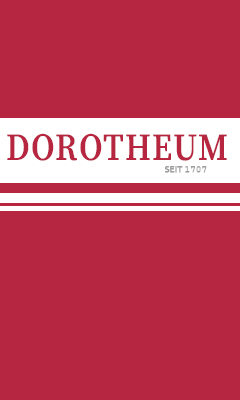

Comments
Sign in to comment and reply.


Scroll Top